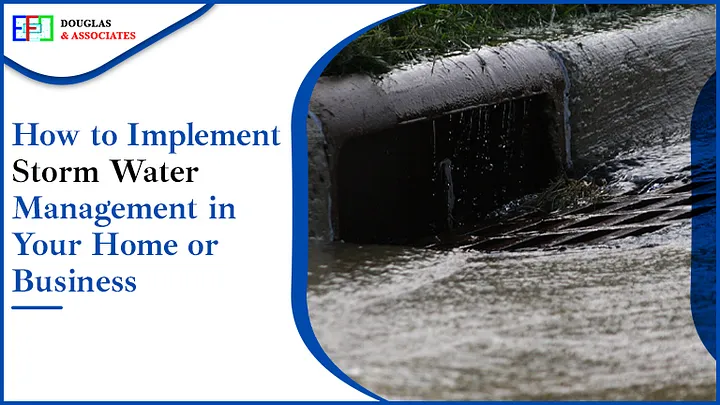
Rainfall on our landscapes ought to be beneficial, in theory, unless we start using Stormwater design services. Water is essential to all life for survival. Heavy rains and excessive snowfall would be absorbed by a substantial, nutrient-rich layer of topsoil in a healthy environment. It would act as a sponge, topsoil that would absorb water and make it available to plants. To complete the hydrologic cycle, the extra moisture would be transported by rivers and streams to lakes.
The normal flow and even distribution of water are interfered with by roofs, garages, and other impermeable surfaces. Rainwater is absorbed by grass and other natural ground surfaces. But when they aren’t present, they concentrate on channels and take up pollutants that, if left unchecked, will flow directly into rivers or the ocean, posing several risks to the community.
Why is residential stormwater management needed?
If stormwater solution is not routed properly, the following outcomes are likely to be experienced:
- Sediment, trash, and chemical build-up and disposal into rivers, lakes, and the ocean have an impact on the marine ecosystem and the quality of the water;
- Debris and trash clogging drainage systems have an impact on flooding;
- An increase in rainfall may have an impact on the erosion of banks and hillsides.
- Water pollution, which might force lakes and beaches to close
Thus, collective action is required especially a stormwater infrastructure design to continue enjoying the lakes, rivers, and oceans. Through the stormwater design services, the plants and animals can inhabit these waters because of the aforementioned issues and generate hassles for the entire community.
Types of residential stormwater management
Residential stormwater control can be done in several ways. Select the approach that best fits your property because some of the stormwater solutions may require a lot of room in your yard.
A drain channel — To have a stormwater construction Design, the easiest technique is to utilize big containers, such as cisterns or drums, to collect rainwater. You can use the water you have collected later to clean your home and car, as well as to hydrate your plants. Using less water is another fantastic method to protect the earth.
A green roof, swales, and a rain garden — If your yard is large enough, you may direct the rainwater into a rain garden or swales through stormwater solution engineering techniques. To reduce runoff, the plants will absorb and store water underground.
Porous pavement — If a garden is not feasible, impervious pavers with a garden area can be designed. The grassy area will help manage stormwater construction Design in this way while also adding beauty to your lawn.
Gravel sidewalks — Unable to care for plants? A row of gravel can be used to break up the continuous pattern of cement pavers. In addition to having a fascinating appearance, it also helps to stop water runoff. Residential stormwater management can help you do your part to stop flooding and the depletion of water resources.
The Conclusion
The stormwater solution is the best practice for accumulating water for usage. The blog explains the complete details about stormwater design services, their needs, and types of stormwater management.




